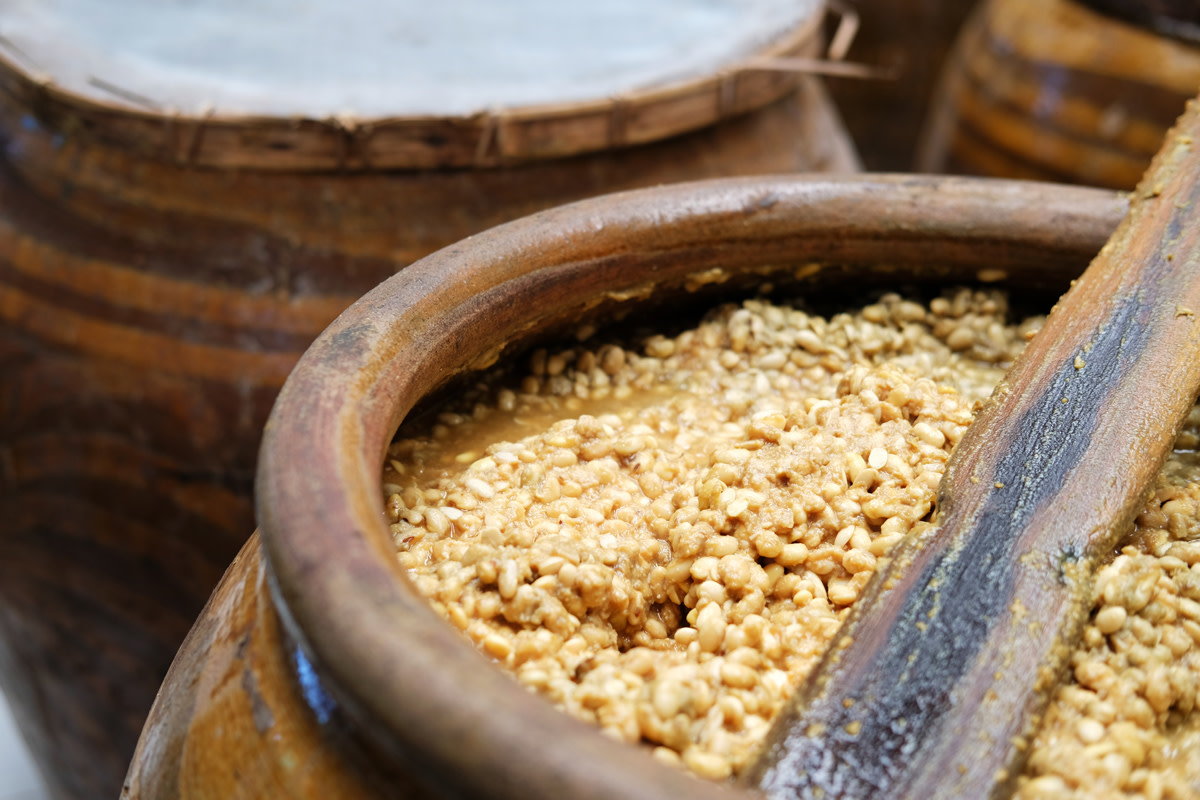
Tamari: What’s the Deal with this Soy Sauce Substitute?
- By Daily Harvest
- Updated: January 2025

Tamari is a type of Japanese soy sauce. It’s often labeled as “gluten free soy sauce” and guess what? Like regular soy sauce, tamari is made from fermented soy beans.

Tamari is a type of Japanese soy sauce. It’s often labeled as “gluten free soy sauce” and guess what? That's essentially what it is.
Like OG soy sauce, tamari is made from fermented soy beans. The ingredients needed to make tamari are simple: water, soybeans, salt and often a touch of alcohol or vinegar to preserve freshness. Also like soy sauce, you can find tamari with varying amounts of sodium. Optionality is nice.

The biggest difference between tamari and soy sauce is that soy sauce is made with wheat, while tamari is made using solely soybeans, which gives it a richer, smoother flavor compared with the sharper taste of soy sauce. This means that unlike soy sauce, tamari is gluten-free, making it a great soy sauce substitute for people who need to avoid gluten.While the presence of gluten is the most notable difference between tamari and soy sauce, there are other differences too. Soy sauce tends to be a little more salt-forward. Tamari also has a slightly darker color compared with regular soy sauce.
Worth noting: there is such a thing as gluten-free soy sauce that isn’t tamari. For the folks who can’t jive with gluten, this type of soy sauce is made with rice instead of wheat (remember, tamari is just soybeans and no grains) and the taste is pretty similar to regular soy sauce.
If you need to avoid gluten, the answer is clear: Tamari all day. Choose a bottle specifically labeled “gluten free” to ensure there are no trace amounts of gluten hanging around.
If you don’t have any issues with gluten, you might want to keep both stocked at home and play around in your cooking and dipping (hello, sushi). The two ingredients are more or less interchangeable, though soy sauce is a little saltier so you can get away with using less. Tamari does have a more complex flavor, so chefs often recommend using tamari in cold dishes (like salad dressings) and soy sauce on hot food (think stir-frys), but really there are no rules. Unless you can’t eat gluten. Then there are rules— lots of rules).
When shopping for either tamari or regular soy sauce, choose organic to ensure you’re getting a sauce made from organically grown, non-GMO soybeans.
We take care of food so food can take care of you. Stock up on our deliciously nourishing best sellers with tamari at daily-harvest.com.
Important Notes: Unless otherwise noted, nutrition information is sourced from USDA FoodData Central and reflects the reference amount customarily consumed. These are standardized servings and not necessarily the amount present in the highlighted Daily Harvest recipes. Nutrition information for Daily Harvest products can be found on packages and under "Nutrition Facts" for each product at "dailyharvest.com". Vitamin and mineral functions are sourced from Linus Pauling Institute Micronutrient Information Center.
When would you like your next delivery?
Note On Your Existing Order
Order #{{number}} for your most recent box has already been processed and is still scheduled to arrive {{date}}.
I understand Save CancelYour subscription subtotal must be above $50 for the box to ship. Add your replacement item(s) first and then try deleting this again.
When would you like your next delivery?
Note On Your Existing Order
Order #{{number}} for your most recent box has already been processed and is still scheduled to arrive {{date}}.
I understand Save CancelYour subscription subtotal must be above $50 for the box to ship. Add your replacement item(s) first and then try deleting this again.
Loading...